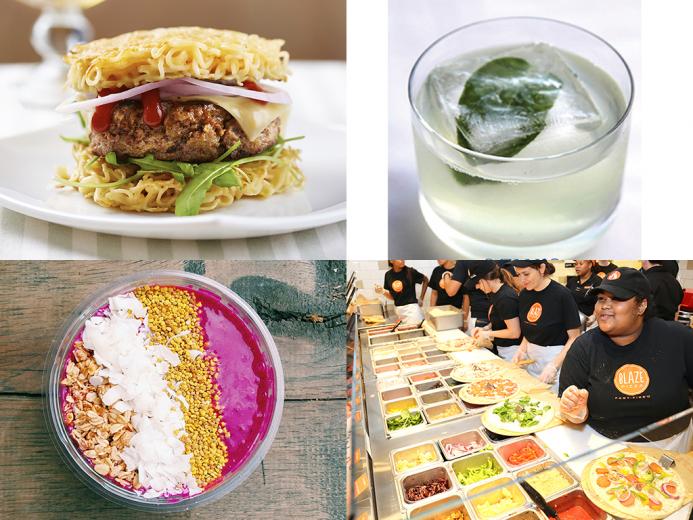1 6
1 6
Everyone is after the millennial dollar. These young consumers (69 million U.S. adults currently aged 18-34) comprise a generation that knows what it wants and sets the new trends in food and dining. In its new report, “Millennial Menus: Culinary Trend Tracking Series,” market research publishing company Packaged Facts notes: “Demanding what you want, how you do and don’t want it, and when you want it are hallmarks of millennials.”
You get this group: Millennials are more likely than older adults to want to stand out in a crowd, to make fashion statements and to expect their purchases, from shoes to cars, to express their individual personalities. “This pronounced proclivity for bold and confident individualism extends noticeably to millennials’ food choices,” explain the authors of the Millennial Menus report.
The company outlines how to cultivate the demanding, opinion-leading millennial generation as culinary consumers by focusing on these five important food trends.
A lot of consumers appreciate restaurant dishes made just the way they like them, but this is particularly true of millennials. Restaurants that offer customization can get a leg up on the competition for the millennial customer. Packaged Facts posits that, even more so than the fast-casual segment juggernaut, customization is a game changer. “The millennial definition of customized, personalized, made-to-order food goes way beyond ‘white, wheat, or rye’ to encompass restaurant meals that are bespoke in their entirety.” More than a third of millennials order something different every time they visit a restaurant, so particularly enticing to them is the ability to create a mix-and-match dining experience where they can build something new every time. Is it any wonder that build-your-own, fast-casual pizza chains such as Blaze Pizza (above) and Pizza Rev have become industry disruptors in recent years?
Millennials are leading the way when it comes to swapping out the three-meals-a-day ritual in favor of several snacks or small meals. 35 percent of millennials, according to the report, are using snacks as meal replacements. "Munchies," therefore, “are now expected to be healthful, flavorful and portable.” This data dovetails with last winter’s 2016 trends forecast from Baum + Whiteman consultants, who made the following prediction: “The ground is shifting away from sweet to savory and from high carb to nutrient-dense and high-protein indulgent snacks.” Toppogi (above), rice cakes with teriyaki butter, sesame seeds and toasted nori from Momosan in New York are a good example. As Restaurant Hospitality noted last year, “For restaurants looking for ways to drive traffic and sales, especially in off-hours, snacks might be the golden ticket.”
Millennials are driving the popularity of convenient, all-in-one bowl meals—including on-trend acai and poke bowls, as well as rice, noodle and quinoa-based dishes. “Whether the ingredients are customized or preset, bowls allow for creative expression and plenty of room for healthy ingredients, all within a familiar format,” explains the Packaged Facts report. Bowls also lend themselves to well to fast-casual, customizable, personalized “assembly line” formats, a la Chipotle. “With breakfast and lunch/dinner bowls already becoming a familiar part of the restaurant landscape, snack-size and dessert bowls are ready for their close-up,” notes the report. (Above: an acai bowl from Jugos, Boston.)
Picking up where fusion cuisine left off, thrill-seeking millennials love their mashups. Cronuts, sushi burgers, nacho lasagna, “nondenominational noodle bars” and ramen burgers are just the tip of the iceberg, and we are guessing impetuous millennials will come up with more crazy-mixed-up foods. Be creative: These items are great buzz-generators, imaginative restaurateurs. Here are some ideas to get you started.
With the rise of the craft cocktail movement, millennials are drinking vinegar-based beverages, artisanal tonics, kombucha and other digestives. Stemming from the probiotic trend, shrubs (drinking vinegars made from fruit, sugar and vinegar, often with an aromatic, such as a herb or spice) and digestives are being more widely used in beverages, mixers and flavoring agents. For example: the switchel, a popular drink from the 17th century made of water, vinegar, ginger and honey or maple syrup, delivers an exciting sweet-sour-spicy flavor. The Blaise's Basil by from Azure by Allegretti, Atlantic City, NJ, (pictured) is made with vodka, lemon-basil syrup, St. Germain, fresh-squeezed lemon juice and white balsamic vinegar.

